Abstract
Creatine kinase (CK) release curves were analysed in 40 patients with acute myocardial infarction. Three groups could be identified. Group A (duration of CK release less than 30 hours) comprised 15 patients whose CK release was completed within 22.8 hours. In these patients chest pain was noted on the first hospital day and necropsy in three showed a homogeneous myocardial infarction. Group B (duration of CK release greater then 30 hours) comprised 16 patients who had a significantly longer CK release time of 42.2 hours (P less than or equal to 0.05). Their chest pain persisted for two to three days and pathological examination in five patients showed a heterogeneous composition of the infarcted myocardium. Group C comprised nine patients who had a second rise of serum CK. This was always associated with chest pain. It reflected an extension of the infarct which accounted on average for 24 per cent of the size of the final infarct. We concluded that a CK release of short duration indicated infarction without extension, CK release of longer duration indicated a gradual extension of infarction, and a repeated CK release resulted from a sudden extension of an infarct. According to these criteria an extension of the infarct occurred in 62 per cent of our patients.
Full text
PDF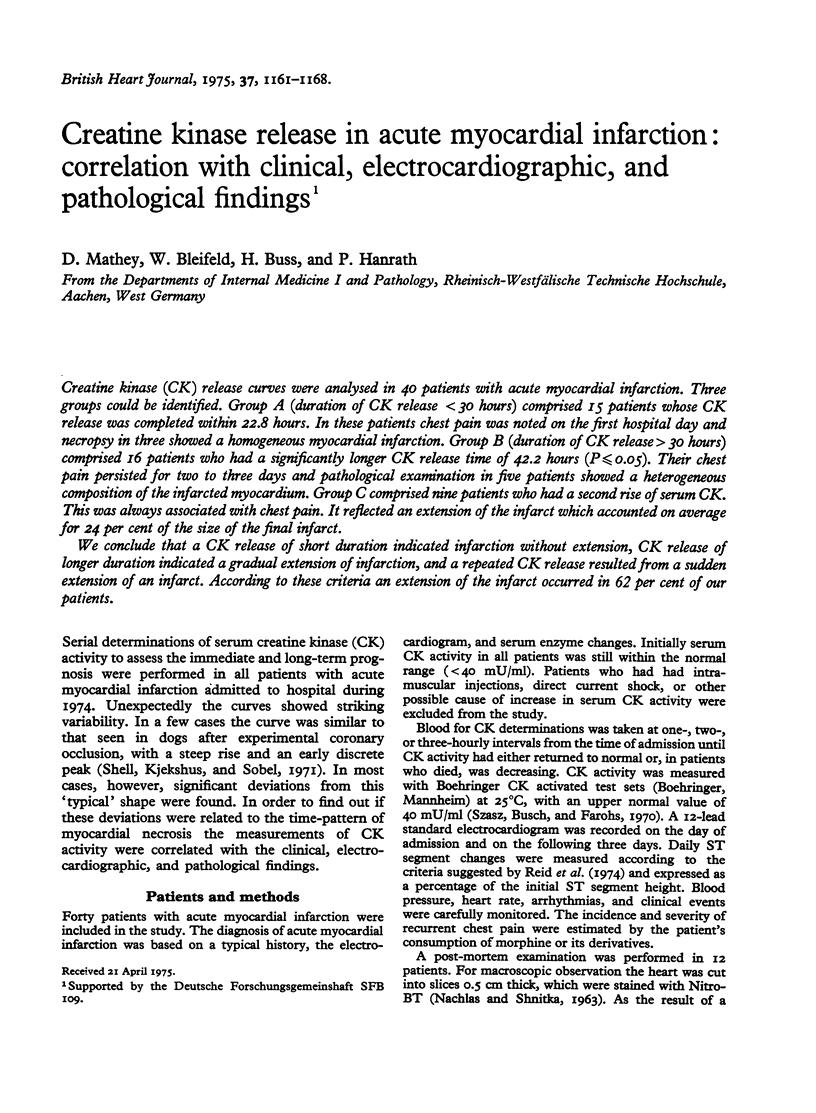
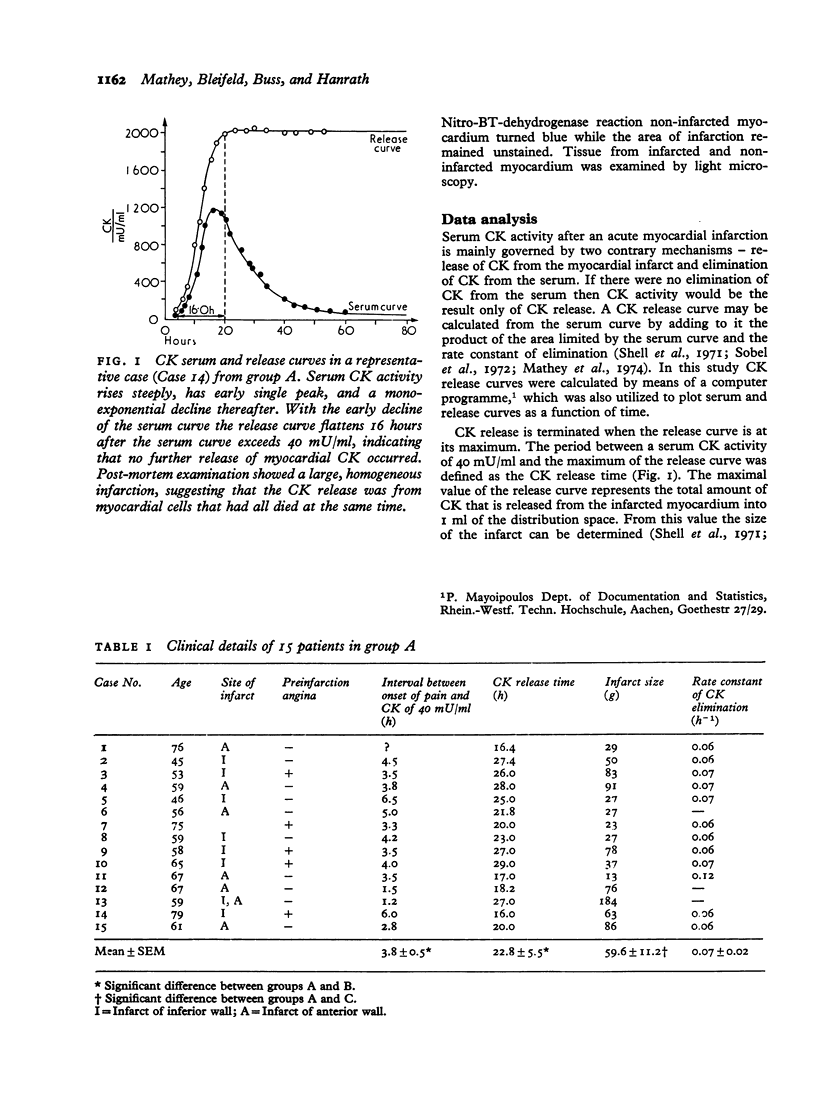
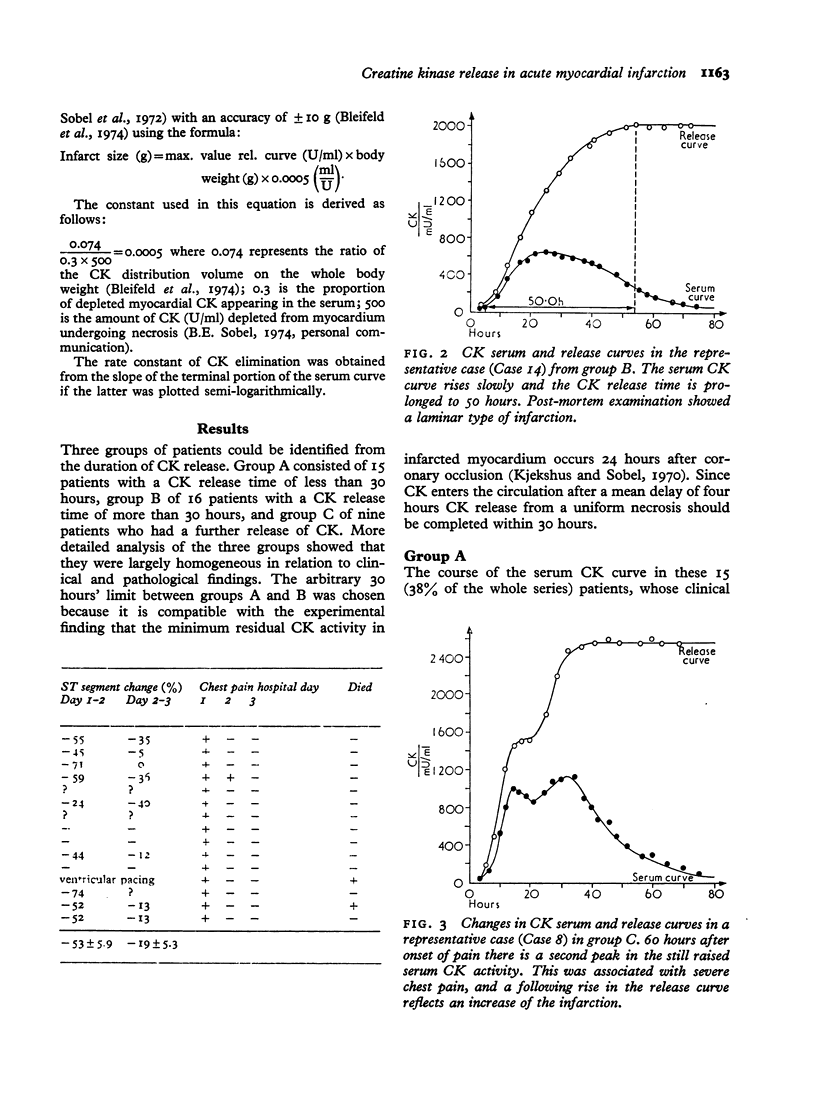
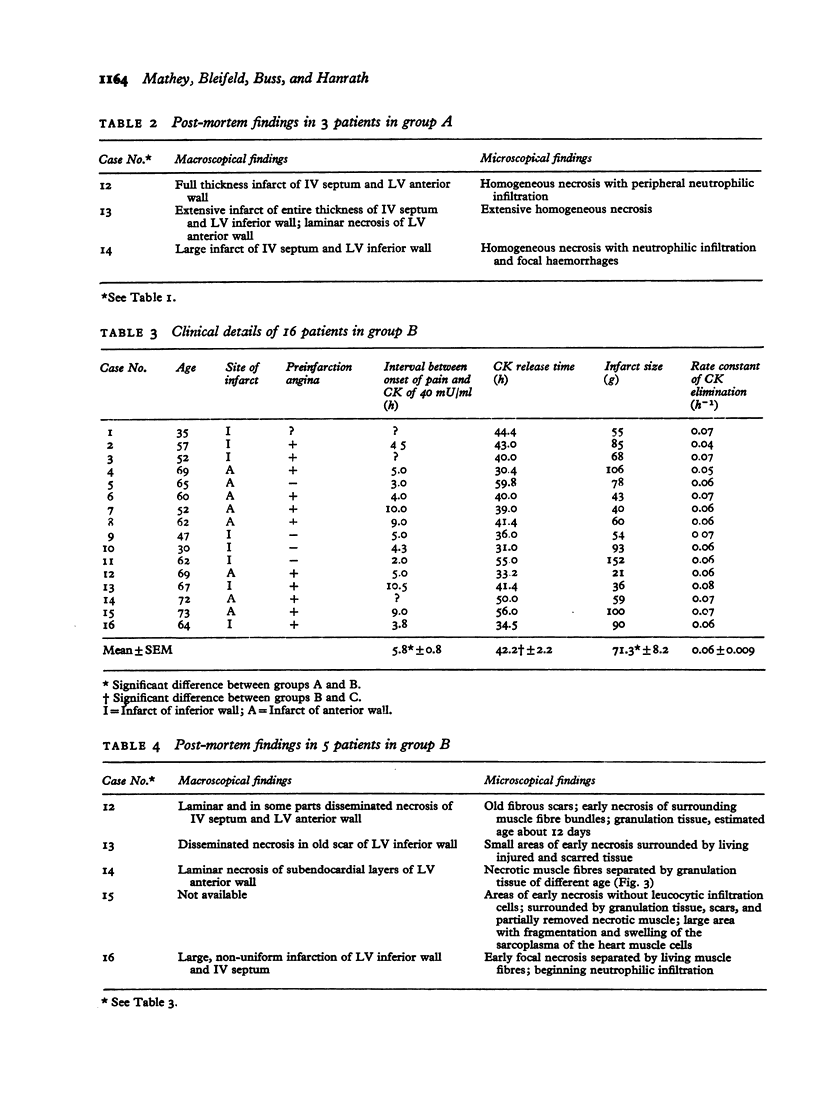
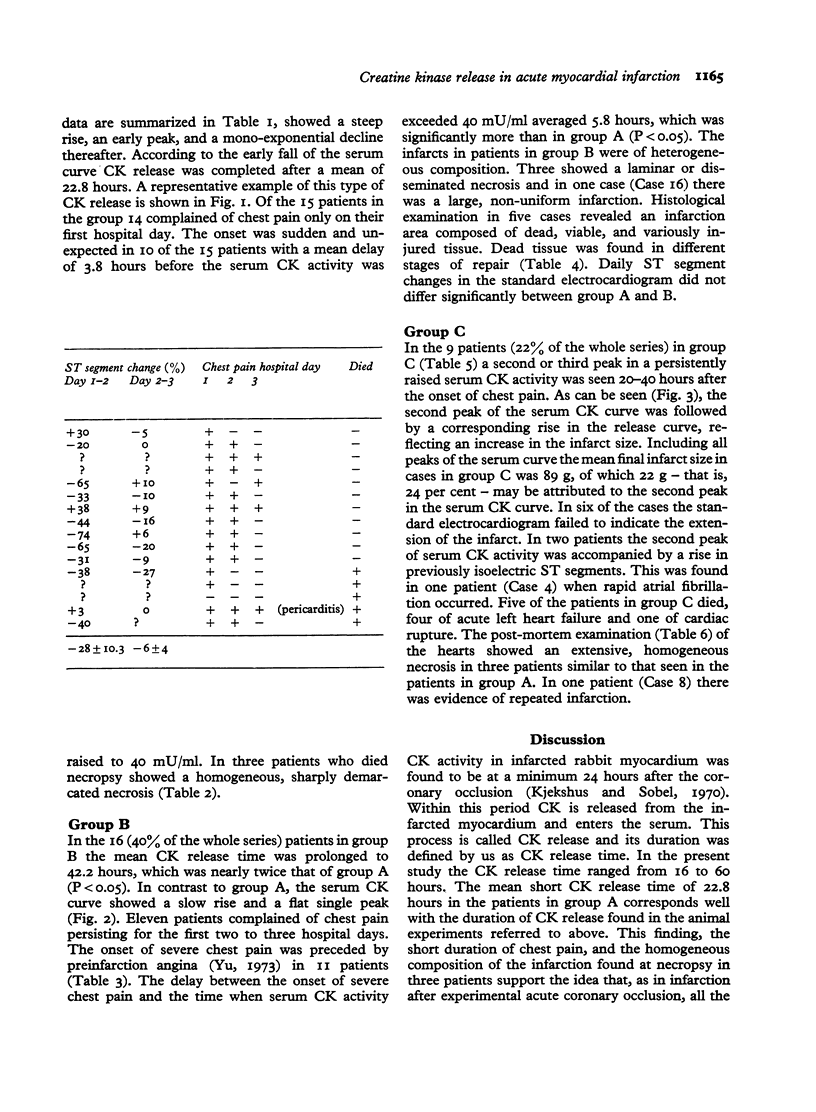
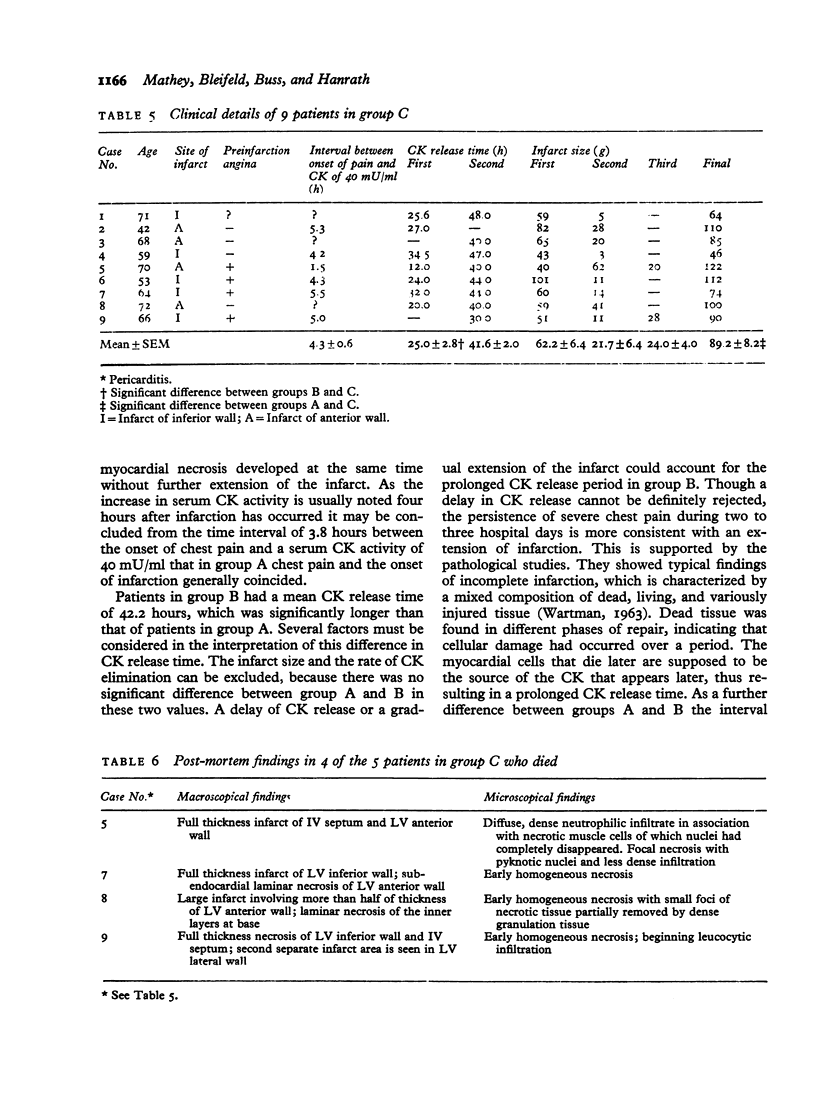


Selected References
These references are in PubMed. This may not be the complete list of references from this article.
- Bleifeld W., Mathey D., Hanrath P., Buss H., Effert S. Serienuntersuchungen der Kreatinphosphokinase zur intravitalen Bestimmung der Infarktgrösse. Verh Dtsch Ges Kreislaufforsch. 1974;40:449–452. [PubMed] [Google Scholar]
- Kjekshus J. K., Sobel B. E. Depressed myocardial creatine phosphokinase activity following experimental myocardial infarction in rabbit. Circ Res. 1970 Sep;27(3):403–414. doi: 10.1161/01.res.27.3.403. [DOI] [PubMed] [Google Scholar]
- Maroko P. R. Editorial: Assessing myocardial damage in acute infarcts. N Engl J Med. 1974 Jan 17;290(3):158–159. doi: 10.1056/NEJM197401172900310. [DOI] [PubMed] [Google Scholar]
- NACHLAS M. M., SHNITKA T. K. Macroscopic identification of early myocardial infarcts by alterations in dehydrogenase activity. Am J Pathol. 1963 Apr;42:379–405. [PMC free article] [PubMed] [Google Scholar]
- Shell W. E., Kjekshus J. K., Sobel B. E. Quantitative assessment of the extent of myocardial infarction in the conscious dog by means of analysis of serial changes in serum creatine phosphokinase activity. J Clin Invest. 1971 Dec;50(12):2614–2625. doi: 10.1172/JCI106762. [DOI] [PMC free article] [PubMed] [Google Scholar]
- Sobel B. E., Bresnahan G. F., Shell W. E., Yoder R. D. Estimation of infarct size in man and its relation to prognosis. Circulation. 1972 Oct;46(4):640–648. doi: 10.1161/01.cir.46.4.640. [DOI] [PubMed] [Google Scholar]


